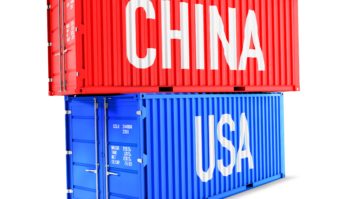While the Consumer Electronics Association may have lost a round of its fight to get the digital TV conversion back on track, its president/CEO Gary Shapiro understands why the Federal Communications Commission made its decision. Still, CEA is ready to challenge it in court.
Since April, when FCC Chairman Michael Powell issued his voluntary DTV timetable to the consumer electronics, broadcasting and cable industries, Shapiro has worked with the FCC, the other industries and CEA members to drum up support for its position. The work accelerated in July when Powell pointedly criticized the CE industry for not backing his plan like the other industries did.
Shapiro spoke with TWICE just after the decision was made and outlined CEA’s position on the issue and on several related factors.
Did you expect the FCC decision to go the way it did?
Based on what we heard in the days leading up to the decision, we expected it. FCC Chairman [Michael] Powell issued voluntary proposals. Our video group and our members rejected it. The cable and broadcasting industries were not penalized by the voluntary proposal, so they backed it. I mentioned to our members that what is voluntary might become mandatory, but our members said “no.” The FCC decision is understandable, because they are under pressure to get the analog spectrum back [from broadcasters].
The FCC and the National Association of Broadcasters (NAB) say the cost of the digital tuner will be an extra $15 or so. CEA said it will be $200 to $250. Why the difference in cost estimates? The NAB estimate is seriously flawed. The licensing fees could be as much as $14 by itself and that cost does not go down over time. That does not include extra component costs. Today [a tuner] costs $400. Ten or 15 years from now tuner costs won’t be a factor. But when we polled our members, none of them refuted an estimate of $200 to $250 for a tuner [when the mandate begins to go into effect].
The CE industry’s track record over the years is lower prices for products with better capabilities. The FCC is saying that component costs will go down as your members become more efficient in manufacturing these tuners. Do you dispute that assessment?
Component costs will go down but patent costs will remain, as I said earlier. Prices of digital TVs have gone down 2 percent a month. With upper-end sets it doesn’t matter that you will have to have a higher price tag. But it does matter for 19-, 20- or 25-inch sets. Many 25-inch sets are now priced at around $200 or $250. The price could double with a digital tuner. For people on a budget, with fixed incomes, there will no longer be such a thing as a “basic” TV.
What will this decision’s immediate effect be on the industry?
Well TV manufacturers will have to change their product planning and adapt. The bottom line for us is that we [may] have to put digital tuners into sets to serve the 13 percent of American households relying on over-the-air reception for their TV signal. We don’t need [the tuners], we need digital cable equipment compatibility. This issue gets us going on the cable question, which everyone feels is needed.
What can you say to consumers who have just bought, or who plan to buy, analog TVs and video equipment. How will this decision affect analog video sales in the short term?
The consumer electronics industry will have to do a better job in educating the public on all of this. For instance, there are plenty of DVDs, VCRs and video game systems that are used with [analog] sets now and will be used after the digital TV conversion. Analog TVs will be used in the future too. There will be a marketplace for conversion boxes so those consumers can get over-the-air digital signals.
How will you challenge this decision?
Our board asked us to challenge this decision in court and we will do it. This is not good policy, it is bad law. We feel the FCC does not have the jurisdiction to do this. It is basing its decision on the [1962] All Channel Receiver Act, which involved UHF and VHF channels. With closed captioning or V-chip rulings they were not able to rule under that Act. We have 60 days to file a suit or ask the FCC to reconsider.
Is this initial decision a setback for the CE industry?
In some ways it has been a very positive development. If we had not opposed the mandate we would have been chastised by consumer groups for going along with government to force consumers to buy our products. We want consumers to buy our products on their own. We have received plenty of backing from plenty of consumer groups and are considered the good guys in all of this.
Going forward, what has got to be done to make sure that the digital TV transition goes forward at a quick and profitable pace?
We need content. About 85 percent of the country is covered with HDTV broadcasts, but most are low power upconverts of analog programming, so there is no real HDTV available. What has to be done is hold the broadcasters’ feet to the fire so they will do their fair share and keep their end of the bargain. Two thirds of TV broadcasters have sought delays to start [HDTV] broadcasts. They are getting a free ride.













